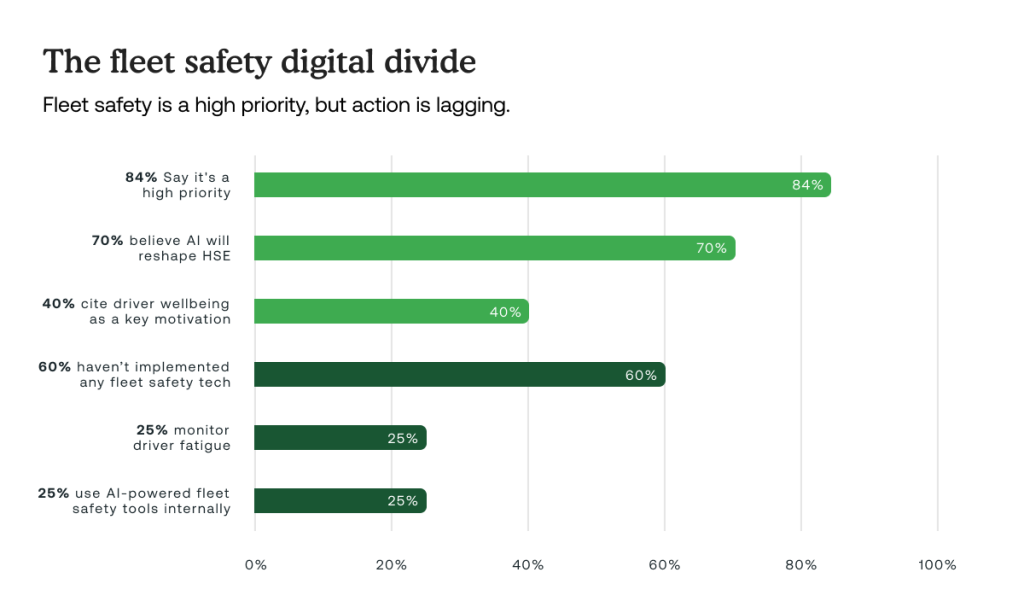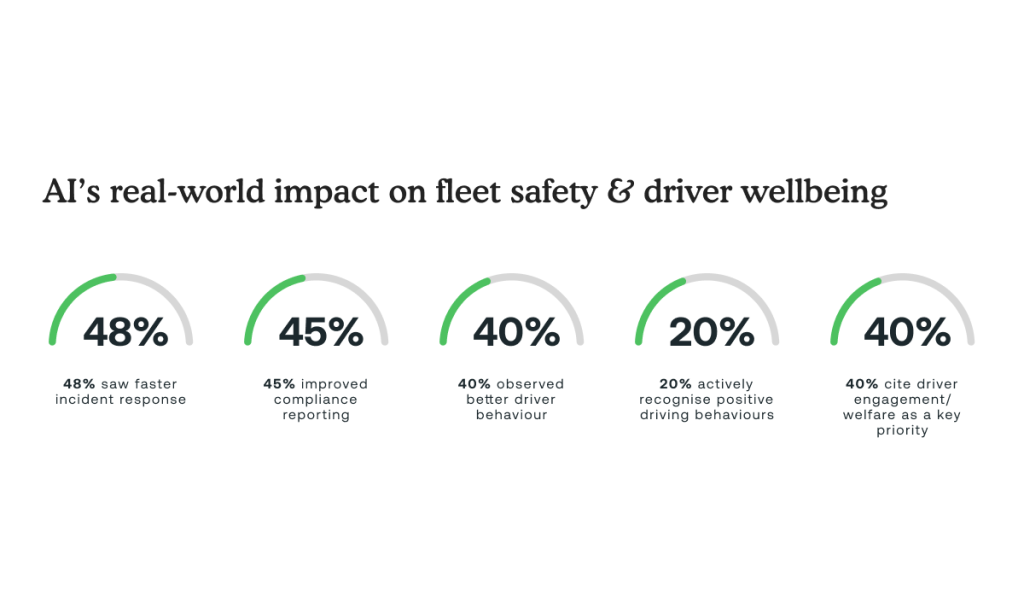AI and automation are rapidly reshaping health, safety and environmental (HSE) roles, but not being extended to fleet operations, despite growing regulatory and operational risks.

A new study by vision-based fleet safety technology firm Netradyne found that 84% of HSE leaders say fleet safety is a high or very high organisational priority. Yet 60% admit they have yet to implement any formal fleet safety technologies or policies.
The survey, carried out among 114 HSE and operational decision-makers at the Health & Safety Event this month, also found that just one in four companies use AI fleet safety tools despite 70% expecting AI to reshape safety roles.
Many fleets remain reliant on legacy tools: nearly a third (29%) use GPS tracking and traditional video-recording dashcams, while 27% depend on transport partners, often with limited visibility and safety oversight.
Only 25% use AI-powered fleet safety tools directly, highlighting a stark readiness gap.

Durgadutt Nedungadi, senior vice-president for EMEA and APAC at Netradyne, said such a technology gap was not just a safety issue, but also a paramount business risk.
“Fleet incidents impact insurance premiums, compliance exposure, brand trust and delivery performance. By digitising fleet operations, companies can protect people, reduce risk and build a culture of proactive safety.”
Over 70% of respondents believe digitalisation of HSE functions will fundamentally change their roles, particularly through predictive analytics, AI-driven insights and real-time risk management. Yet 36% are still in the early stages of digitalising HSE operations, and only 20% are highly digitised with advanced tools such as AI and automation.
This disconnect is especially pronounced in fleet operations, where traditional tools such as GPS tracking remains commonplace, and safety oversight is often outsourced, limiting visibility and control. Eight in 10 (80%) of respondents said that GPS location and arrival timelines are the only metrics they receive from their transport partners, and just 14% get real-time alerts and video.
The study also revealed safety weaknesses around driver fatigue and risk monitoring.

Driver fatigue is a leading cause of road accidents, yet only 25% of organisations actively monitor it. Many also fail to use real-time data to flag risky driving or ensure compliance with transport legislation.
This exposes a major missed opportunity to prevent fleet-related incidents using real-time driver behaviour data. The consequences are serious: injuries, supply chain disruptions, rising insurance claims, and risks to sustainability and ESG goals.
But despite low adoption, confidence in AI is growing. Almost half (45%) plan to adopt AI and automation in the near future.
Among current users, 48% report faster incident response, 45% see improved compliance reporting, and 40% note better driver behaviour.

AI is also enhancing driver wellbeing and engagement. Nearly 40% of survey respondents cited driver engagement and welfare as a key reason for prioritising fleet safety, and almost 20% now reward positive driving behaviours. These trends show that AI can both reduce risk and promote safer, more supportive driving cultures.
Tools such as Driver•i, Netradyne’s vision-based fleet safety platform, help businesses turn real-time data into actionable insights. From reducing risky driving to enabling compliance and driver-coaching, AI is shifting transportation HSE from reactive to predictive strategies.
As ESG, mental health, and employee wellbeing gain board-level focus, Netradyne has urged companies to ensure fleet safety evolves with the broader workplace.
“HSE leaders are embracing digital tools, but when it comes to fleet safety, a dangerous gap remains,” Nedungadi added. “Vision-based AI offers the visibility and control organisations need to meet rising safety expectations and lead with care.”

